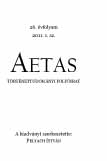
2009 tavaszán Magyarország története címmel a magyar históriát a kezdetektől egészen napjainkig tárgyaló, szakmailag igényes, vizuálisan látványos és újszerűen szerkesztett sorozat indult, amely huszonnégy önálló részből áll. Jelen írásomban véleményemet az Államalapítás 970–1038 című kötetről, a sorozat második részéről mondom el, amelyet Font Márta készített, aki Közép- és Kelet-Európa korszakbeli történetének kiváló kutatója.2 Ugyanakkor néhány fontos témát illetően – ilyen a törzsek, az életmód, a társadalom és az állam kérdése – a megelőző, illetve a következő kötetre is tekintettel leszek, hiszen ezen könyvek tematikája között lényeges, tartalmi öszszefüggések és szoros kapcsolódási pontok vannak. Éppen ezért nagyon tanulságos lehet áttekinteni azt, hogy az egyes szerzők a különböző jellegű, közös kérdésekről milyen nézeteket vallanak.
More...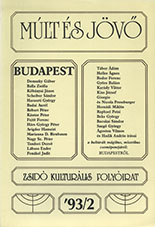
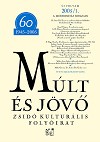
Rudolf Klein examines the impact of orientalism of the synagogue construction of the Austrian-Hungarian Monarchy, using point of view that stands in contrast with that of most historians of architecture.
More...According to estimates, corruption makes up some 5% of the world economy’s overall output – with the worse performing countries enduring a higher share than this. Rasma Karklins in this book proceeds to create a typology of the different kinds of corruption. It finds that even though the population may encounter corruption mostly in connection with traffic cops or hospital doctors, in a social, political and economic sense, high-level political corruption concerning public procurement or privatisation is the most harmful. It is a tragic paradox that, due to the freedom of the press, people hear a lot more about corruption in a democracy than in non-democratic systems in which the press is censored. This may easily lead to the perception that democracy is more susceptible to corruption than authoritarian rule, and may even engender a nostalgia for earlier dictatorships. Rasma Karklins: A rendszer kényszerített rá - Korrupció a posztkommunista társadalmakban (M. E. Sharp, 2005.) Rasma Karklins: The System Made Me Do It - Corruption in post-communist societies (M. E. Sharp , 2005.)
More...Keywords: Hungary; democracy;
For two decades Hungary, like the other Eastern European countries, followed a general policy of establishing and strengthening the institutions of democracy, rule of law, and a market economy based on private property. However, since the elections of 2010, when Viktor Orbán’s Fidesz party came to power, Hungary has made a dramatic U-turn. This article investigates the different spheres of society: political institutions, the rule of law, and the influence of state and market on one another, as well as the world of ideology (education, science and art), and describes the U-turn’s implications for these fields and the effect it has on the life of people. It argues against the frequent misunderstandings in the interpretation and evaluation of the Hungarian situation, pointing out some typical intellectual fallacies. It draws attention to the dangers of strengthening nationalism, and to the ambivalence evident in Hungarian foreign policy, and looks into the relationship between Hungary and the Western world, particularly the European Union. Finally, it outlines the possible scenarios resulting from future developments in the Hungarian situation.
More...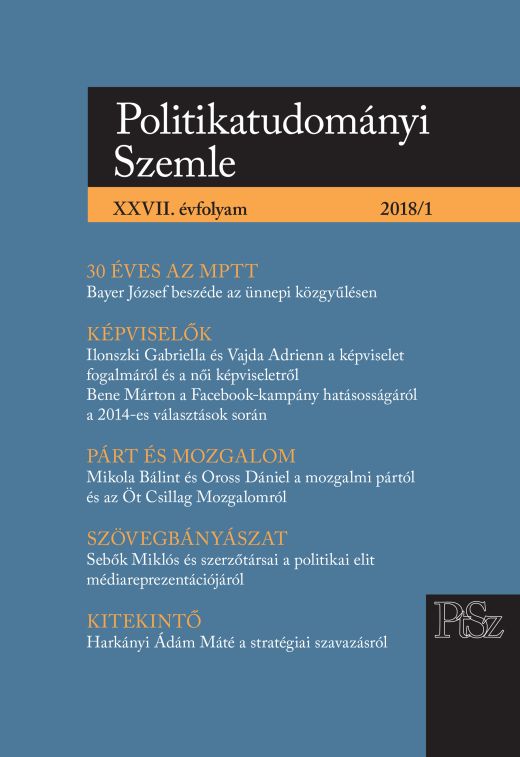
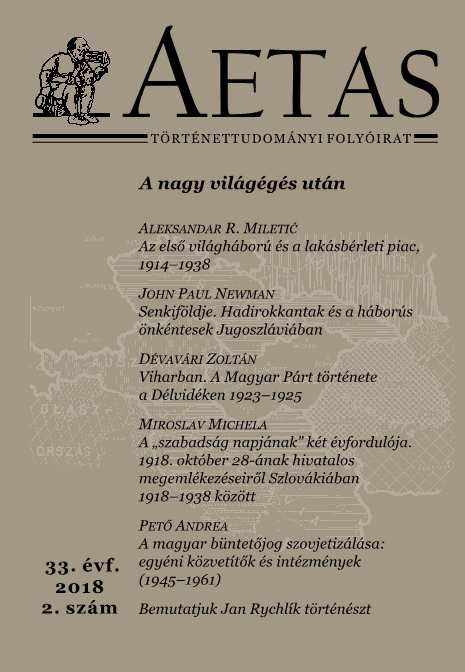

Keywords: circus; contemporary circus; new circus;Trafó;
A survey of the last year's (2015-2016) contemporary circus performances presented in Budapest
More...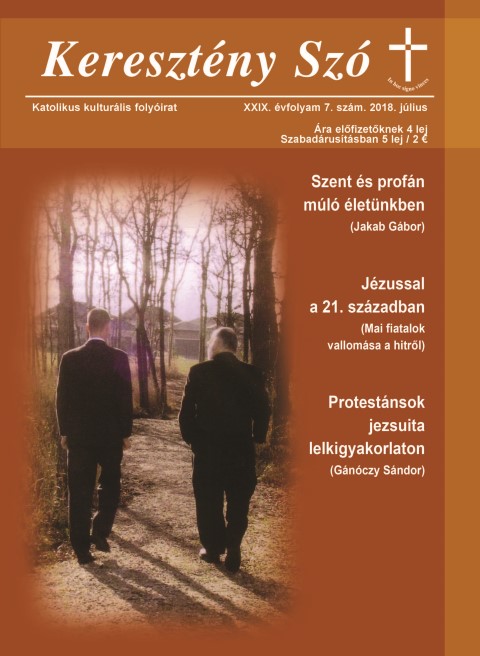
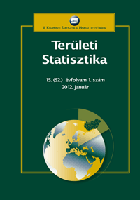
Keywords: gravity field; energy consumption; economic growth; changing economic structure; weighted mean centre
Based on statistical data it can be clearly stated that the changes and trends in energy demand are very similar to the rearrangements in the world economy, indicating the tightness of the relationship between the two processes. Increasing energy consumption and economic performance are observed in emerging countries, while their share of the world's energy consumption and global GDP is growing steadily, resulting in significant (spatial) shifts. The study examines the evolution of the world's energy and economic power from 1990 to 2015 by gravity modelling. Using this method, the authors present the main processes occurring ineach continent or group of countries – sometimes in the opposite direction – and highlight the differences that exist. The applied bi-dimensional regression calculation allows for a deeper analysis,the authors compare the set of points resulting from the gravitational computation (for GDP and final energy consumption) and draw conclusions from the results about how the space changes and becomes distorted due to the gravity field. This novel approach is another addition to the complex question of the relationship between the two indicators.
More...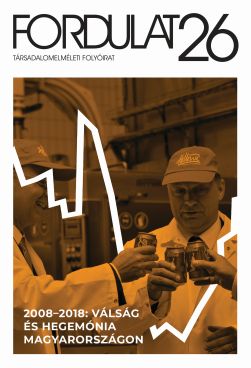
Keywords: class structure;class relation;global capitalism;hungarian sociaty;class formation;class structuration;global social formation
This paper proposes a framework for the analysis of class structure in Hungary from a global perspective and aims to answer the question: what kind of class relations and class positions has the historical evolution after 2008 and 2010. The paper interprets the class structure of Hungarian society as a semi-peripheral class structure embedded in the capitalist world-economy or modern world-system. To explore these relationships, the analysis first examines the relationship between the capital-labor relationship that organizes class relations and the core-periphery relationship that organizes the capitalist world-system. As a second step, the paper examines, in a global and historical context, the class-shaping effect of the local state and the struggle of politically organized classes and class alliances (political-economic blocs) to gain key positions in the state. Finally, the analysis provides an answer to the question of how it could organize itself as a ruling class in the struggle to win the state in 2010, its relationship with dominated classes (local labour), intermediate and mediator classes (“middle classes” of the semi-periphery), and with three major fractions of capital producing locally.
More...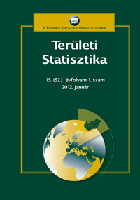
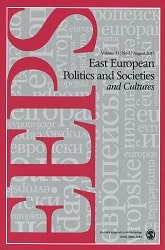
Keywords: Hungary; China; illiberal democracy; vulnerability; Fidesz;
To what extent do Euroskeptic parties in Eastern and Central Europe have viable alternatives to the European Union and the broad basket of liberal policies promoted by the EU? In recent years, Hungarian Prime Minister Viktor Orbán has used his overwhelming parliamentary majorities to chart a partially new course, and this article inventories one aspect of this new course. The article asks whether Hungary can gain any potential benefits from closer links to China as a partial replacement for resources that might not be available (or that might be lost) from its more conventional European partners to the west. Orbán has often justified both radical constitutional change and economic nationalism as powerful medicines to push back against Hungary’s vulnerability at the hands of its foreign and domestic enemies. In this context, China emerged as both a potential source of new revenue and rhetorical trope that seemed to fit in a broader Fidesz discourse of an “Eastern opening.” This article makes a first attempt to separate rhetoric and reality. It first explores how the ongoing consolidation of illiberalism in Hungary has now also sparked a geopolitical repositioning through the “Eastern opening” during Fidesz’s second term. Second, it seeks to understand the theoretical proposition that new sources of external funding—including FDI and government bond purchases—can help enable a state to execute such a broad geopolitical shift. To do so, it develops empirical material from the fascinating Hungarian efforts to position themselves as a major beneficiary of Chinese engagement with Europe. The article concludes that Orbán’s policies have indeed been broadly consistent with his party’s new rhetoric, but it also concludes that the amount of Chinese investment is, in aggregate, still modest to date.
More...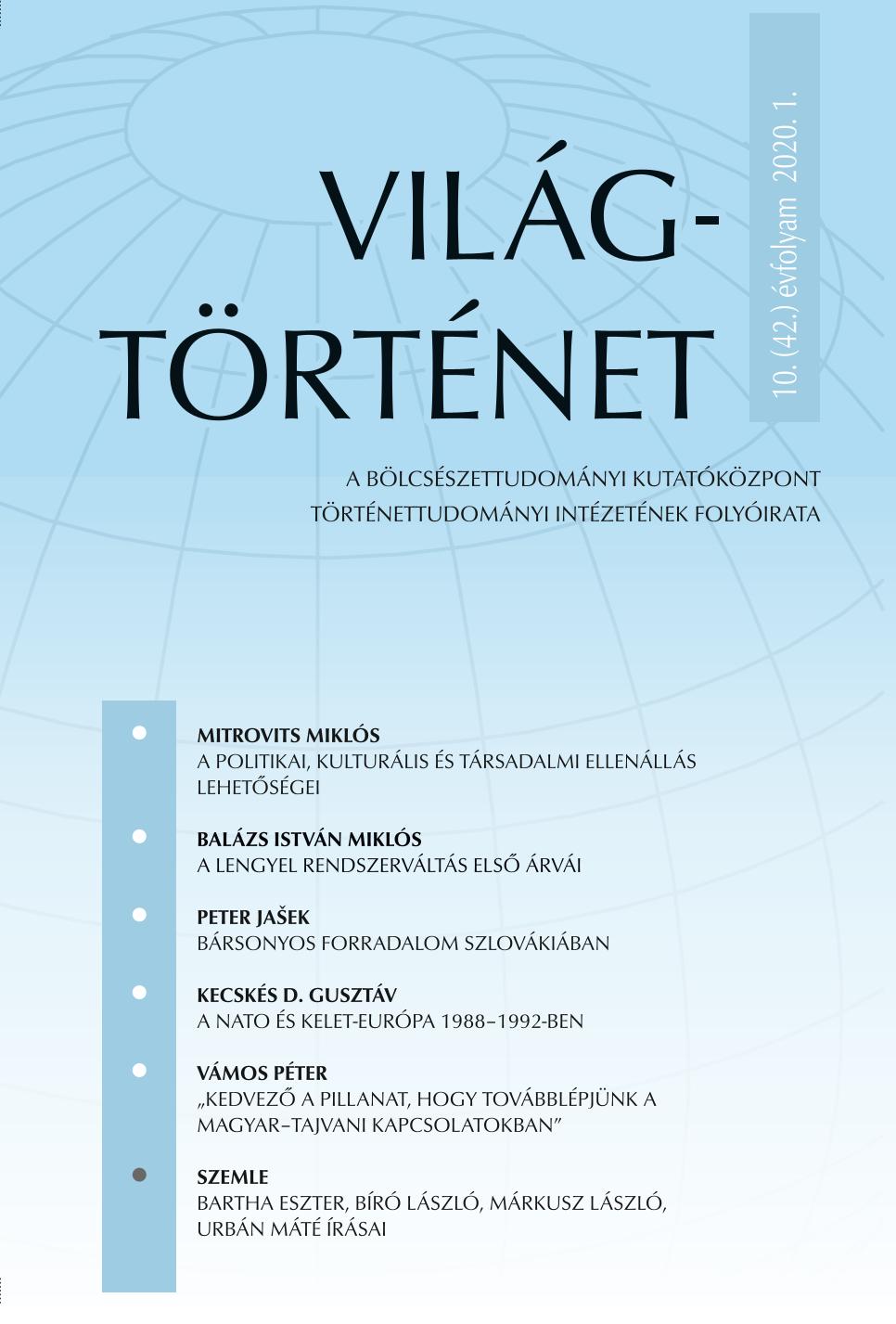
Thirty years ago, decisions were taken that fundamentally determined the geopolitical situation of today’s Europe. NATO still exists and American troops continue to be stationed on our continent. The study, based on international and Hungarian literature, and documents already available in the NATO Archives, the French Foreign Ministry Archives and the National Archives of Hungary, illustrates how the 1989–1991 Eastern European regime change affected the North Atlantic Alliance, and thus the current security situation in Europe. Celebrating its 40th anniversary in 1989, the alliance faced many challenges. The turbulent transformation of Eastern Europe and Eastern–Western relations is particularly significant. Thus, the North Atlantic Alliance’s eastern security environment has changed radically. The rival military alliance, the Warsaw Pact, gradually eroded and then dissolved in July 1991. By the end of the year, the Soviet Union itself had disintegrated. However, NATO security experts have identified new threats as well as changes that are favourable to them. They feared the destabilization of an unmoved Eastern European region for decades: nationalism suppressed by the Soviet rule until then, social upheavals triggered mass movements, and sharp conflicts began to emerge between individual states in the region. As a first step in the transformation of the Alliance, the doctrine of the use of military force and military tools changed radically. Crisis prevention and crisis management have become NATO’s new mission. Opening up to Eastern Europe was also an important element of the transformation. Intensive networking has begun in the military and political spheres towards the region.
More...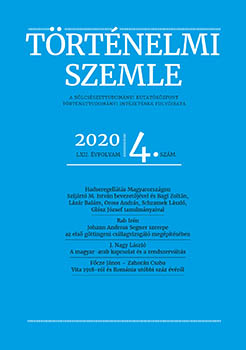
Keywords: Kádár regime; Arab world (Algeria; Egypt; Syria); Hungarian-Israelian relations
The Arab world played an important role in the foreign relations of Hungary. During the era of Pan-Arab nationalism, up to the death of Nasser, the relations were very good. In the 1980s the trade relations provided Hungary with a considerable dollar income. After that Hungary got closer to Israel, and thus the Hungarian–Arab relations have deteriorated. The change of regime deeply affected the Arab countries, but both sides declared the importance of the preservation and improvement of the relations.
More...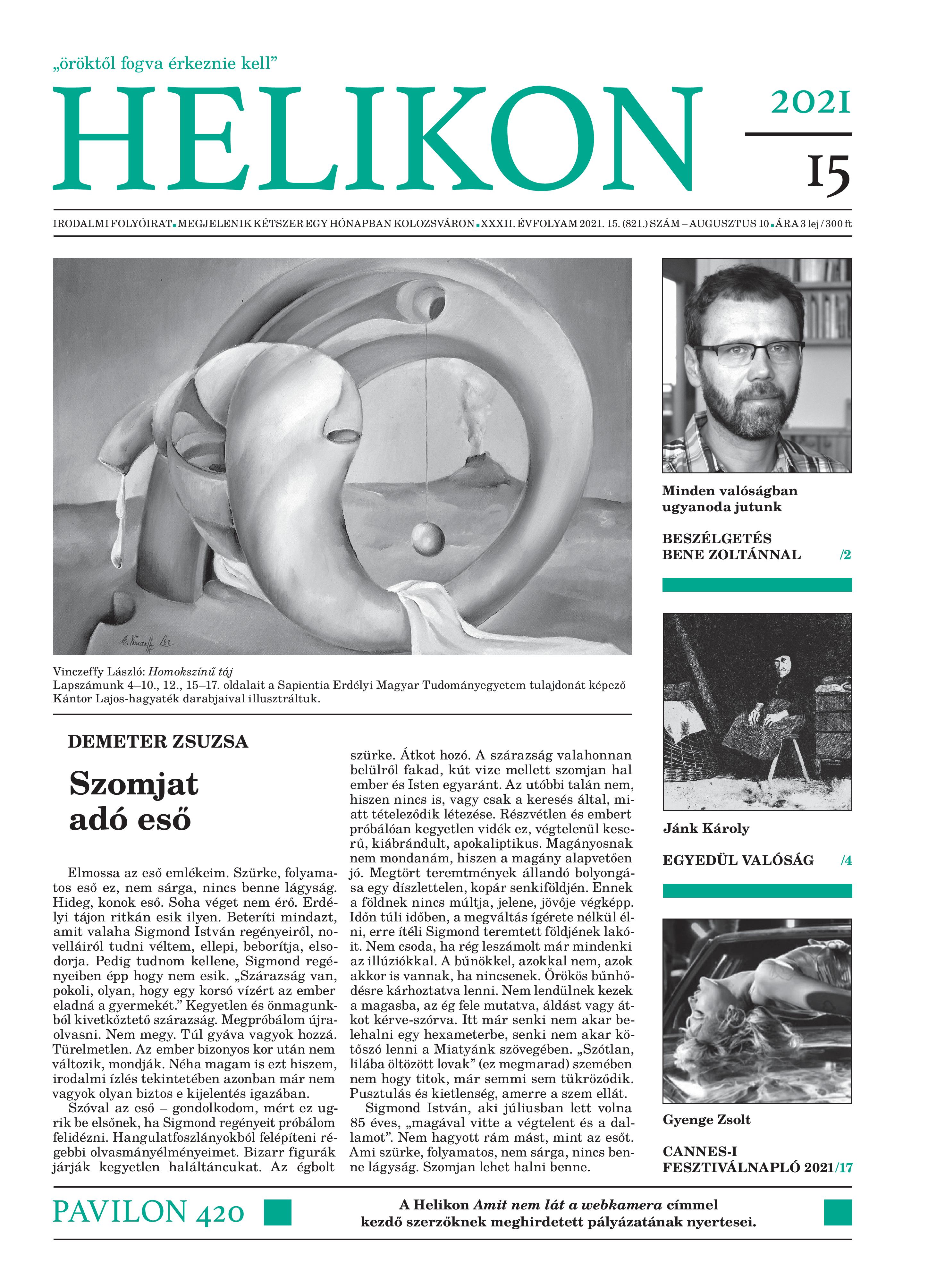
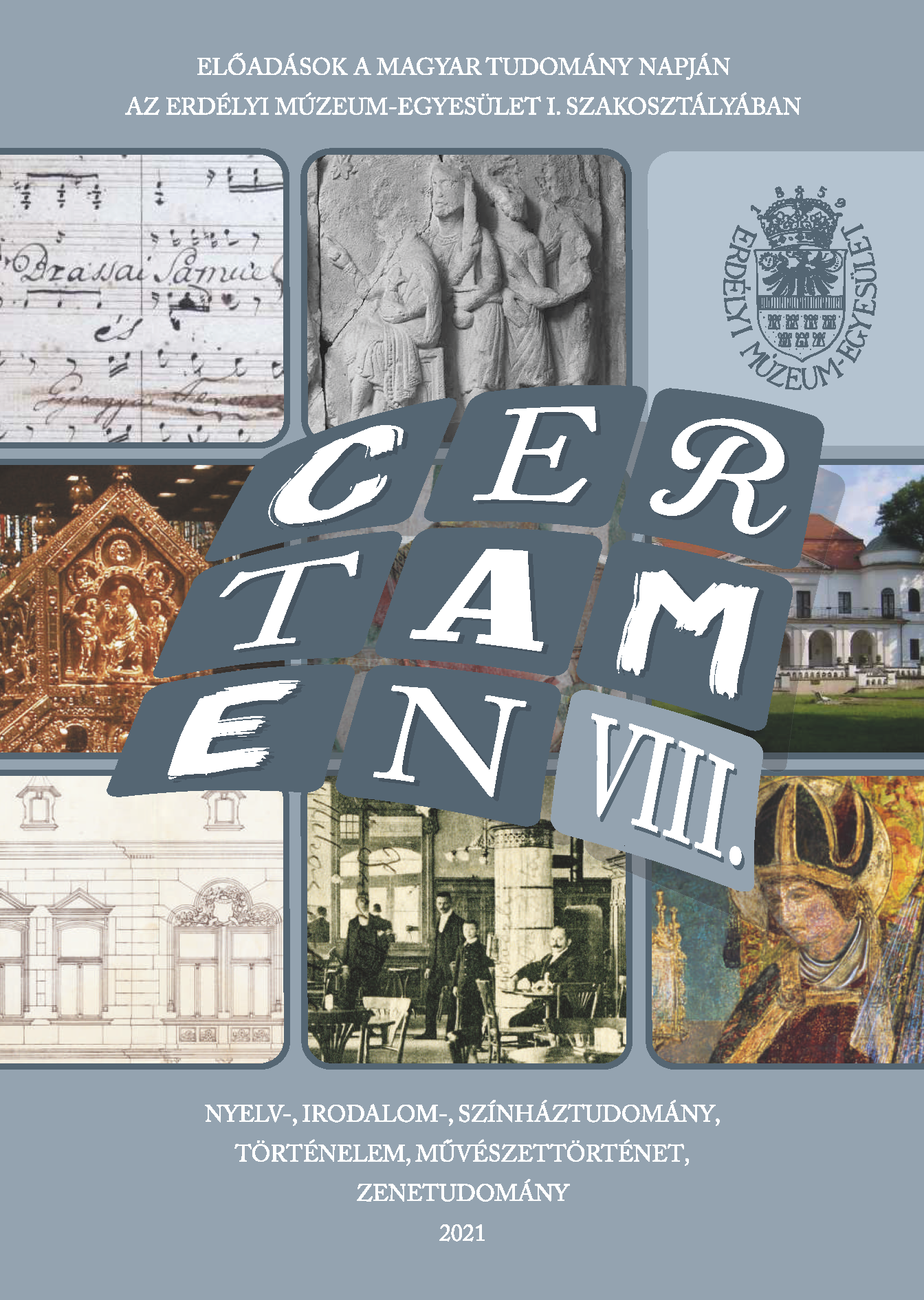
Keywords: Târgu Mureș; architecture; historicism; coffee house; Domokos Berzenczey; Béla Keleti;
The study provides insight into certain aspects of the past of the building in Târgu Mureş that stands on the corner of the Trandafirilor Square with the Béla Bartók Street. In 1765-1766, on this land plot, Earl Ferenc Földvári had raised a baroque style, multi-storey building with the contribution of master builder Paul Schmidt. The family’s coat-of-arms on the main façade was sculpted by Anton Schuchbauer, while the interior wall painting of the staircase figuring Hungarian kings and leaders was painted by Paul Seblauer. In the second half of the 19th century the building ended up in the property of the Lázár earls and the widow of Otto Bissingen, Eleonóra Lázár, in 1902, transformed it into a representative palace, according to the newest tendencies of the period. Due to its historicizing main façade and the closed, turreted corner balcony the building became one of the most elegant among those located in the historic town center. Not long after, the ground floor hosted the renowned coffee house named Korzó, run by Adolf Rechnitzer, thus, the newest transformations were elaborated in line with the needs of the establishment. In 1904, based on the plans of architect Domokos Berzenczey, the capacity of the halls of the ground floor were expanded. The elegant furnishings, in art noveau style, were made by Károly Tóthfalusi, a local carpenter with experience in France and England. In 1910 the expansion of the space continued with the help of entrepreneur Béla Keleti. The reinforced concrete pillars were designed by a famous expert in the field, Richárd Sabathiel from Budapest. Simultaneously, all interior arrangements and furnishings were renewed according to the geometric art nouveau style.
More...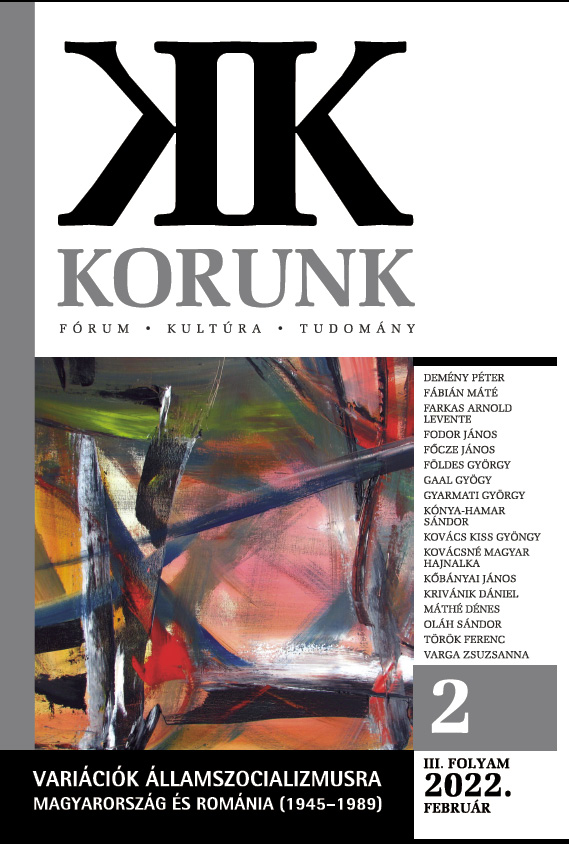
Keywords: János Kádár; Nicolae Ceausesc; foreign policy; state socialism
The starting point for the comparison is 1965. It was in this year that Nicolae Ceaușescu was put in a position to control the foreign policy of his party and his country. János Kádár had already been doing this for eight years. After touching on the personal and institutional aspects of foreign policy, the study outlines the historical and structural factors, the coordinates within which the leaders of the two countries had to shape their foreign policy doctrine. It will then examine the extent to which foreign policies helped to advance the national interest and the domestic policy objectives of the group of leaders governing the country.
More...